 |
|
| plants text index | photo index |
| mangroves > Lumnitzera in general |
| Teruntum
merah Lumnitzera littorea Family Combretaceae updated Jan 2013 Where seen? This pretty plant with plasticky leaves and tiny red flowers is sometimes seen in good mangroves. It is found in the back mangroves, in soft, muddy substrates where tidal inundation is rare. Also along waterways with a permanent and strong input of freshwater. It was formerly called L. coccinea. Features: Short shrub to tree up to 25m tall with a trunk 50-65cm in diameter. Bark dark and deeply fissured. Some may have slender knee roots. Leaves spatula shaped with oval ends (2-8cm), thick and fleshy, arranged in a spiral. There is small gland at the leaf tip that resembles leaf nodules and are believed to contain nitrogen fixing bacteria. Flowers small (2-3cm) in dense bunches, bright red with five tiny petals (the stamens are much longer than the petals). The flowers are fragrant and produce lots of nectar. According to Tomlinson, this species appears to be predominantly pollinated by birds, especially sunbirds and honey eaters, with bees and wasps as additional visitors. The small fruits are ribbed, corky and float, and dispersed by water. Each fruit contains one seed. Sometimes mistaken for Chengam (Scyphiphora hydrophyllacea) which has its leaves arranged in a spiral. According to Giesen, although occurring throughout Malaysia and Indonesia, L. littorea and L. racemosa practically exclude each other in habitat and have never been collected in exactly the same stand. The exact cause of this different ecological behaviour is not yet known. Human uses: According to Burkill, the timber is hard and durable, and thus sought after for marine pilings as well as bridges, wharves, parts of canoes and other household items. There are reports that pier posts made of the tree were still sound after 20-50 years. When first cut it smells of roses. But large-sized timber is rare. It is also used as firewood. Status and threats: It is listed as 'Endangered' on the Red List of threatened plants of Singapore. |
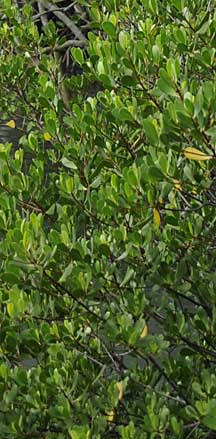 Pulau Ubin, Aug 09 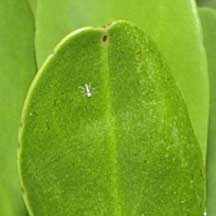 Small gland at the leaf tip. |
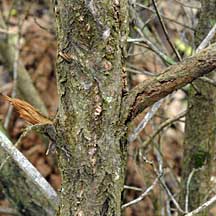 Bark deeply fissured. Pulau Ubin, Apr 09 |
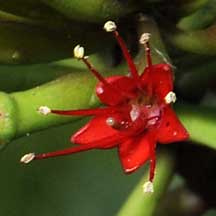 Stamens much longer than petals. Pulau Semakau, Jan 09 |
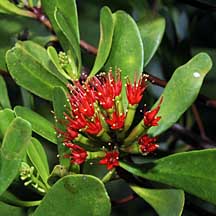 Pulau Semakau, Jan 09 |
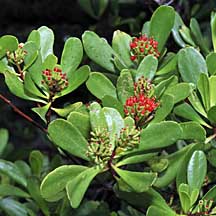 Pulau Semakau, Jan 09 |
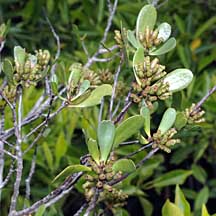 Pulau Semakau, Nov 09 |
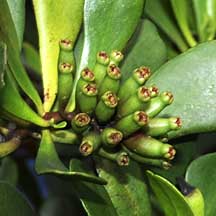 Pulau Semakau, Dec 12 |
| Teruntum merah on Singapore shores |
| Photos of Teruntum merah for free download from wildsingapore flickr |
| Distribution in Singapore on this wildsingapore flickr map |
|
Links
References
|
|
|